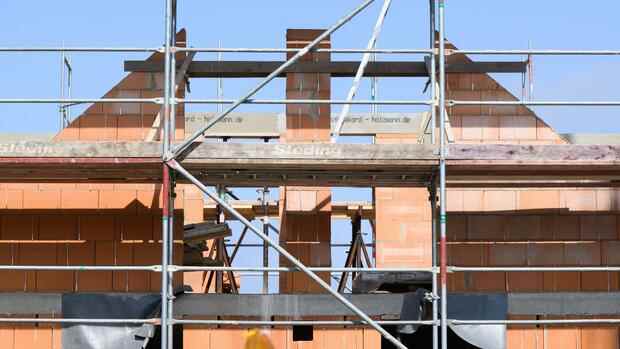According to Kriese, only inner-city buildings should be funded.
(Photo: dpa)
After the additional billion euros provided by the federal government for the promotion of energy-efficient new buildings was used up on April 20th on the first application day, there is only the funding program for the efficiency house level 40 with sustainability class until the end of the year. Funding still follows the old funding philosophy, which was fixed on reducing energy consumption in a very narrow sense.
Fortunately, the Federal Government would like to say goodbye to this one-sidedness. From 2023, only buildings that can also be considered sustainable in a broader perspective are to be funded. This could mean a paradigm shift for the construction sector, which tends to waste energy, land and resources.
The principles that should apply to reformed KfW funding have not yet been formulated. What is sustainable in construction and therefore eligible for funding – and what is not? Five important opportunities for improvement compared to the previous funding are striking:
Greenhouse gas emissions as key criteria
Firstly, greenhouse gas emissions would have to be one of the relevant criteria in the future, not just energy consumption. And not only the emissions during the time the building is in use, but also those that occur up to the completion of a building, for example during the extraction and manufacture of the building materials.
Top jobs of the day
Find the best jobs now and
be notified by email.
This would reduce the eligibility of a building for which a lot of concrete was used and which is easily eligible according to today’s rules. It can currently even be declared a “zero energy house”. On the other hand, climate-friendly construction methods would finally be rewarded appropriately, such as timber construction, in which carbon is permanently stored and thus climate-neutralized.
Ulrich Kriese is spokesman for construction and settlement policy for the Nature Conservation Union (Nabu) and co-founder of the reform initiative “Property Tax: Contemporary!”.
Emissions related to living space
Second, the greenhouse gas emissions of a planned building should be related to the square meter of living space. So far, the energy consumption has been compared with that of a theoretical reference building of the same type and size.
The energy requirement of the planned building only has to fall below the energy requirement of the reference building, even if it is designed very unfavorably from an energy point of view. This calculation method means that small buildings with a large window area and an energy-unfavorable shape may consume more energy per square meter than more climate-friendly buildings. The square meter as a uniform reference value would put an end to bonuses for climate-damaging waste.
Promote buildings only in urban areas
Thirdly, only inner-city buildings should be funded. The preservation of biodiversity, the protection of the humus layer of the soil as a carbon store and secure food production must no longer be torpedoed by state-sponsored greenfield construction.
It’s bad enough that many municipalities are now designating new building areas, despite the great potential for densification in the form of fallow land and vacant lots. Anyone who really wants to build there can do so, but without government funding.
Funds should go to rehabilitation
Public support should only be given to those who build in towns and, above all, those who renovate. Therefore, fourthly, subsidies should flow predominantly and primarily into rehabilitation. Because the most important measure to make the building stock climate-neutral by 2045 is a significant increase in the renovation rate. Refurbishment saves raw materials and energy compared to demolition and new construction. In regions where there is less demand, it helps to prevent the town centers from becoming deserted.
reuse of components
Fifth, the reuse of components should also be encouraged. Reuse protects the climate and resources more than any recycling. There are already component exchanges, but due to the often lacking availability and the overall still too small supply of components, the logistical and planning effort for reuse is very high. Funding would set the necessary incentives here.
More: KfW funding – This is what the new rules for house builders look like
